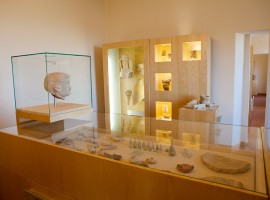
Most of the convent wing is devoted to the Archaeological Museum which houses historical evidence covering a time span beginning in prehistoric times through proto history, Roman times, the Dark Ages and the Middle Ages. They testify to uninterrupted settlement in Monterubbiano’s territory. The museum was conceived to provide accessible culture. All kinds of users can enjoy the exhibits. Particular attention has been paid to sight- impaired visitors for whom audio guides, Braille information cards and copies of artefacts for tactile exploration are provided. The…
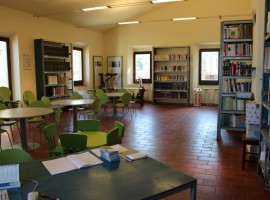
The Luigi Centanni Municipal Library currently houses 4.500 volume. The Collection of books began in 1902 and continues today thanks to citizens’ donations. One of the most significant collections is the one donated by the Abbot Colucci Fund regarding “Piceno Antiquities”, a vast 18th century collection regarding the provincial territory. Another numerous collection is the Children’s Literature Section containing over 1500 volumes. Children’s workshops are often held here.
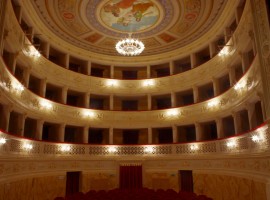
In 1875 the new theatre in Via Roma was inaugurated. It was built on an area on which a 14th century palazzo called “Il Palazzaccio”, belonging to the Pagani family, had stood. This was the family of the painter Vincenzo Pagani, to whom the theatre is dedicated. The imposing façade has late Gothic lines and a Neo-Classical style gable. Entering through one of the three main doors, you are immediately in the…
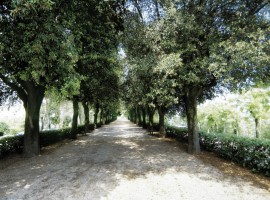
The historic park of San Rocco is a beautiful Italian-style park which lies on a vast area north of the town centre. It’s building began in 1892 when Coccaro hill was levelled thanks to the cooperation of all the citizens who used shovels, baskets and hoes to move an incredible amount of soil. The brave architect who undertook this colossal endeavour was Luca Galli, a Monterubbiano resident who also artfully designed the…
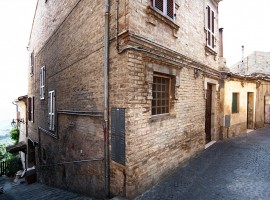
Following the street that runs along the main square, you arrive at the 14th century Jewish ghetto, known as “Le Spiagge” – the Beaches. This area is called “the beaches” because the sun shines on it all day long. A Jewish ghetto was located in this area from the 13th century on. It was one of the most important in the Fermo area. At the time all the houses and workshops were…
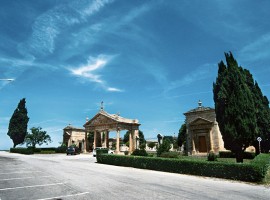
In 1875, due to the state of neglect of the town cemetery and its non-conformity to new regulations, Architect Luca Galli proposed the transformation of the existing structure. The cemetery conceived by Galli is monumental: a longitudinal axis of symmetry divides the courtyard which is bordered by porticos on the two longer sides; on the shorter side (to the west) is the entrance featuring a classical pronaos, which protrudes form the doric…
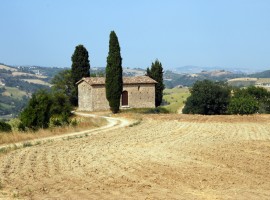
Originally his name was “Burdentis” and then it was changed to “Verdiente” or “Verdente”, from an incorrect pronunciation of the local populations. Built in the fourteenth century by Farfensi, it was born as a church-chapel service for the monks, sharecroppers and family members who worked in the fields nearby, and sometimes the church could be used as a shelter d ’emergence in bad weather. The structure of the building, without a tower,…
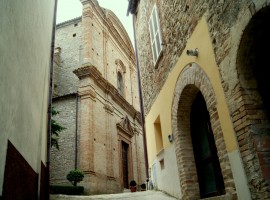
The Church of Saints Mary and Lorenzo is a building of 1767, in baroque style, with a nave. Made and designed by Lazarus Giosafatti, it houses: a Pietà in polychrome terracotta of the fifteenth century, numerous sacred paintings, the reliquary of St. Fortunato, a seventeenth century organ, a marble Eternal Father of the fifteenth century, some sacred wooden busts. The sacristy is furnished with up marble, the ceiling is painted with scenes…
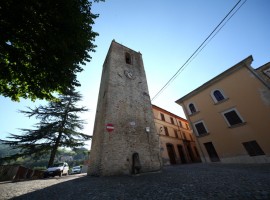
The Civic Clock Tower is a square construction of the fifteenth century. Until the eighteenth century has served as the church tower farfense, built in 1430 by the monks, then partially collapsed in 1755 because of the erosion of the stream Oste.
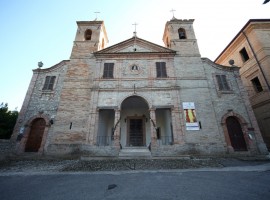
The Church of Santa Viviana or icons was rebuilt at the behest of Bishop. Ciccolini at the end of the eighteenth century. Derived from the rural church of Santa Maria a Pie ‘di Monte (known as Madonna of the icons), has two twin towers of the beautiful facade. The church has the body of Santa Viviana, here translated by permission of Pope Leo XIII, a stucco polychrome image of the Virgin and…